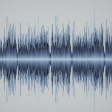Retained
-
Member Title
Newbie
Recent Profile Visitors
-
I am having issues getting my Denafrips Gaia DDC to work with the May KTE via I2S. Seems Holo has 4 different pin out settings, all of which use MCLK, which the Gaia apparently does not output. Has anyone got the May and Gaia to play nice together using I2S? I was aware different manufacturers use different pin outs, but these two guys can’t seem to gel. The USB interface sounds great, but I really wanted to compare it to the I2S interface on the May.
-

Denafrips DACs might not actually be NOS?
orosie replied to GoldenOne's topic in DAC - Digital to Analog Conversion
It was a joke….apparently not a funny one. -

Denafrips DACs might not actually be NOS?
orosie replied to GoldenOne's topic in DAC - Digital to Analog Conversion
Two weeks....... -

HOLO Audio Spring DAC - R2R DSD512
orosie replied to bibo01's topic in DAC - Digital to Analog Conversion
I found the same when reaching out a year ago to Vinshine (Alvin) for exactly how DSD was converted with my T+, and Alvin replied with this brief and muddy explanation..... "DENAFRIPS DAC decode DSD via the resistor ladders network. There is no DSD/PCM conversion. Yep, there is a part of the resistor ladders process/decode the DSD :)" Funny, but I was under the impression that 1 bit DSD cannot be decoded on any type of R2R DAC, without a chip. Am I nuts? They have to be converting to PCM, right? -
See......fragile. : )
-
LOL....people can be so fragile these days.
-

New D/D Converters from Denafrips
orosie replied to Blake's topic in DAC - Digital to Analog Conversion
So go buy one, then. -

New D/D Converters from Denafrips
orosie replied to Blake's topic in DAC - Digital to Analog Conversion
Interface conversion. -

New D/D Converters from Denafrips
orosie replied to Blake's topic in DAC - Digital to Analog Conversion
As Abyss Man said, as good as the internal clock is in the Gaia, connecting it to the Terminator Plus's clock takes it to the next level. I2S has never sounded so good! -

DENAFRIPS TERMINATOR GOES PLUS
orosie replied to mevdinc's topic in DAC - Digital to Analog Conversion
"As for absolute polarity, there is nothing to check. Some do not believe that absolute polarity effect is audible. If so, you're done. For those that do, the whole chain up to the original mic must be taken into account. And since the front end is not controllable, you must have an absolute polarity switch somewhere in your system to handle the case of incorrect polarity in the recording chain. Then you set it by ear on the fly, on a per album or peraps per track basis." This makes total sense now....thanks so much for providing this Richard. I really can't notice much of a difference (at least on the recordings I tested with) at all, so I am just going to leave it on positive phase. I still do not understand why this is set to negative as default, as that would go against every other manufacturer that does not give the end user an option to set absolute phase. I am guessing that they don't think there is much if any difference. Maybe Alvin can answer why they ship the TPlus with negative phase as default setting. -Scott -

DENAFRIPS TERMINATOR GOES PLUS
orosie replied to mevdinc's topic in DAC - Digital to Analog Conversion
Good to know, as my PrimaLuna Evo 400 is also a full balanced differential design. Yes, anyone that can elaborate would be much appreciated! -

DENAFRIPS TERMINATOR GOES PLUS
orosie replied to mevdinc's topic in DAC - Digital to Analog Conversion
So, does Negative Phase mean out of phase, and Positive Phase mean in phase? Why would Denafrips default to a setting of out of phase? PS Audio has this option on their DS DAC, but they call it "in phase" and "out of phase". This is absolute phase we are talking about, right? It is very hard to notice a difference when toggling the phase button, so I am assuming both channels are switched, which makes it much harder to tell then when listening to speakers in which one is wired out of phase. -

New D/D Converters from Denafrips
orosie replied to Blake's topic in DAC - Digital to Analog Conversion
Hey Hoppy, Running Iris into TPlus, with a mix of PCM and upsampled DSD up to 512. Zero issues here. Also running clock cables from TPlus to Iris with fantastic results. Sorry to hear you are having issues. -

New D/D Converters from Denafrips
orosie replied to Blake's topic in DAC - Digital to Analog Conversion
-

New D/D Converters from Denafrips
orosie replied to Blake's topic in DAC - Digital to Analog Conversion
Damn strait!! I love mine...and I don't even have my Terminator Plus yet (this Tuesday!). The Iris works amazing at converting USB to AES for my Auralic Vega G1 right now...as the Vega G1 does not have an I2S input, but as soon as the T+ comes, the clock cables go on, and I2S starts flowing from the Iris to the T+.







